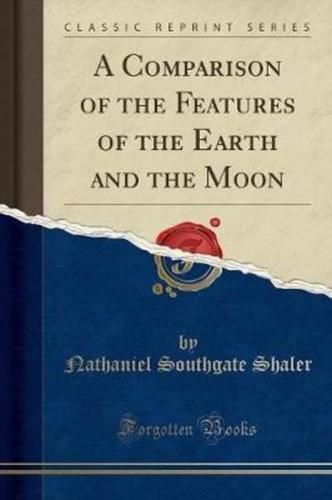Publisher's Synopsis
Excerpt from A Comparison of the Features of the Earth and the Moon
The story of the physical conditions of the moon had best be begun by noting that the relation of our satellite to a larger sphere is not exceptional, but' the most characteristic of all the relations of one stellar body to another. Of the planets in the solar system, all save the two nearest to the sun, Mercury and Venus, have one or more smaller spheres circling about them. The relation of the sun to the several planets in a larger way repeats this plan of grouping lesser about greater orbs.
It is generally believed by astronomers that the celestial spheres have been formed by a process of condensation, due to gravitation, of matter which was originally widely diffused; that our solar system, before it was organized into the sun and lesser bodies, was in the form of a diffused nebulous mass of spheroidal form which extended beyond the orbit of the outermost planet. As this matter gathered towards the center, the material now in each of the planets and its satel lites parted from the parent body, probably at first in the form of a nebulous ring, or spiral, which in time broke and gathered into a spheroidal mass. In that detached portion of the parent nebula the process of concentration was repeated, with the result that satellites, or, as we may term them, secondary planets, were formed substantially as the greater Spheres were set off from the sun. There are many questions and doubts concerning the details of this nebular theory, but that the evolution of our solar system and probably of all stellar sys tems took place in substantially the manner indicated appears to be eminently probable; it is, indeed, fairly well established by what we know of the distant nebular: and by the rings of Saturn, which apparently contain the material which normally Should have formed one or more of its satellites, but which for some unknown reason have remained unbroken.
It is not certain at just what stage in the concentration of a nebula a planet or a satellite may be set off from the parent body; nor can the present distance of the satellite from the main sphere be assumed as that at which the parting took place. It is possible that the concentration of the parent body had gone so far that the diffused or nebulous stage of its materials had been passed by and the more advanced stage of igneous ?uidity entered on. It is, however, more likely that in all cases the separation occurred while the particles of matter were di vided as they are in a gas or vapor. As soon as the two spheres are separated from one another, and so long as they remain in any measure ?uid, the difference in their gravitative attraction on the nearer and more remote part of their masses induces tides, and the effect of these tidal movements, as has been shown by Professor George Darwin, is necessarily to impel the two bodies farther apart. It seems certain that before the earth and the moon became essentially rigid, as they now are, the effect of these tides in driving them apart must have been great enough to account for a considerable part of the interval which now separates them.
About the Publisher
Forgotten Books publishes hundreds of thousands of rare and classic books. Find more at www.forgottenbooks.com
This book is a reproduction of an important historical work. Forgotten Books uses state-of-the-art technology to digitally reconstruct the work, preserving the original format whilst repairing imperfections present in the aged copy. In rare cases, an imperfection in the original, such as a blemish or missing page, may be replicated in our edition. We do, however, repair the vast majority of imperfections successfully; any imperfections that remain are intentionally left to preserve the state of such historical works.






